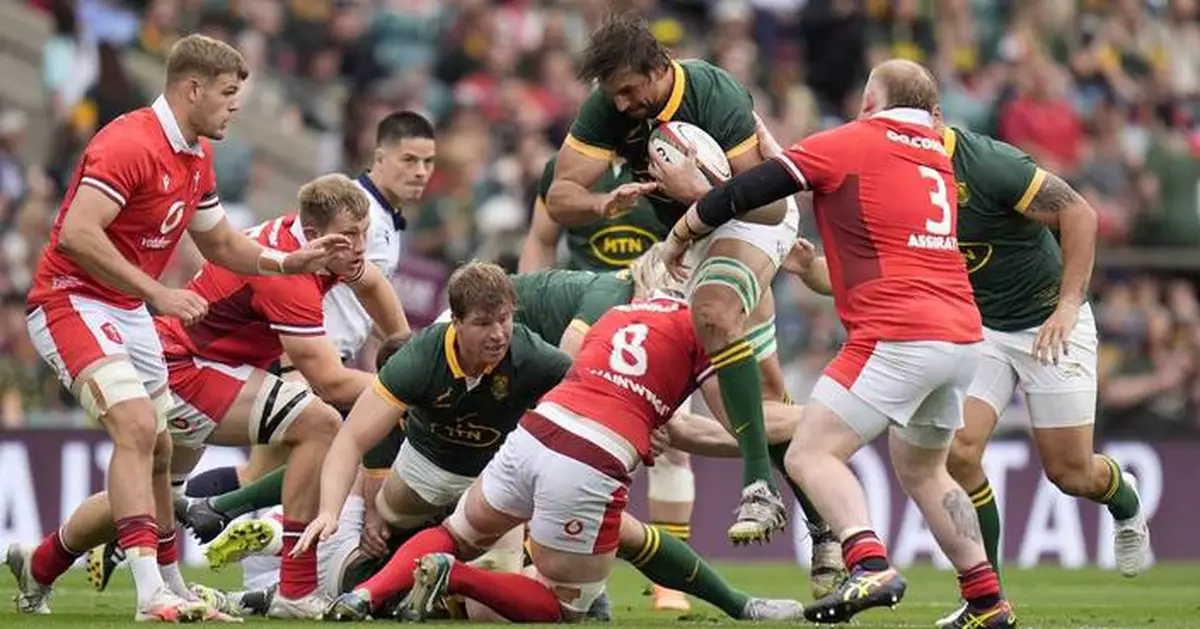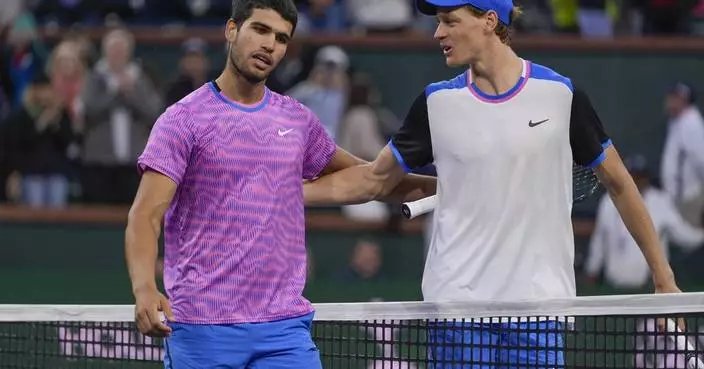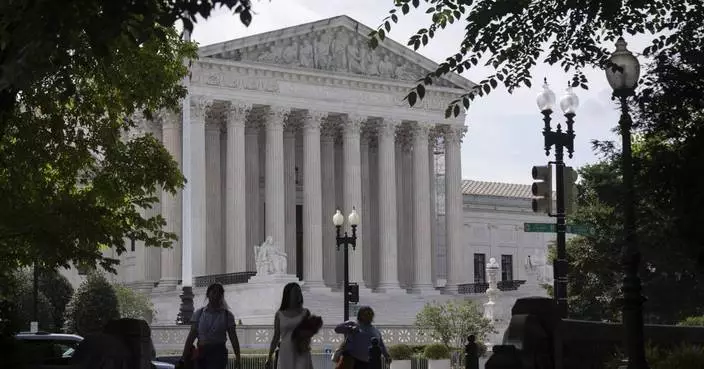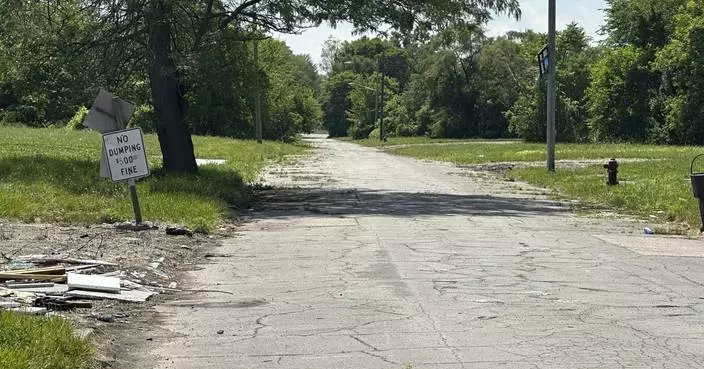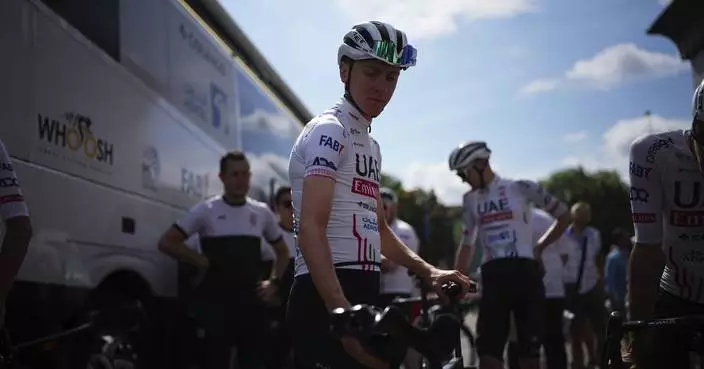LONDON (AP) — Depleted Wales produced a battling performance before Rugby World Cup champion South Africa turned on the power to triumph 41-13 at Twickenham on Saturday.
Despite conceding two tries and collecting two yellow cards in the first 15 minutes, Wales defied the pre-match predictions by making it a contest until two late Springboks converted tries.
Click to Gallery
South Africa's Eben Etzebeth, centre, top, is tackled by Wales' Harri O'Connor, centre, bottom, and Owen Watkin, right, during the international rugby union match between South Africa and Wales, at Twickenham Stadium, London, Saturday June 22, 2024. (Andrew Matthews/PA via AP)
LONDON (AP) — Depleted Wales produced a battling performance before Rugby World Cup champion South Africa turned on the power to triumph 41-13 at Twickenham on Saturday.
South Africa's Aphelele Fassi, center left, is tackled by Wales' Rio Dyer during the rugby union cup match between Wales and South Africa at Twickenham Stadium, London, Saturday June 22, 2024. (Andrew Matthews/PA via AP)
South Africa's Jordan Hendrikse, left, and Wales' Liam Williams battle for a high ball during the rugby union cup match between Wales and South Africa at Twickenham Stadium, London, Saturday June 22, 2024. (Andrew Matthews/PA via AP)
South Africa's Jesse Kriel, left, celebrates scoring during the rugby union cup match between Wales and South Africa at Twickenham Stadium, London, Saturday June 22, 2024. (Andrew Matthews/PA via AP)
South Africa's Jesse Kriel scores a try during the rugby union cup match between Wales and South Africa at Twickenham Stadium, London, Saturday June 22, 2024. (Andrew Matthews/PA via AP)
South Africa's Eben Etzebeth, centre, top, is tackled by Wales' Harri O'Connor, centre, bottom, and Owen Watkin, right, during the international rugby union match between South Africa and Wales, at Twickenham Stadium, London, Saturday June 22, 2024. (Andrew Matthews/PA via AP)
Wales' list of absentees — players injured, unavailable or rested — ran into double figures and it was widely expected to suffer a crushing defeat.
But it trailed only 14-13 at halftime following a try for outstanding captain Dewi Lake, with flyhalf Sam Costelow adding two penalties and a conversion.
The Springboks, who are building for a two-test home series against Six Nations champion Ireland next month, often struggled to impose themselves in their first outing since retaining the World Cup eight months ago.
There were touchdowns for center Jesse Kriel, wings Makazole Mapimpi and Edwill van der Merwe and hooker Bongi Mbonambi, plus a penalty try, while newcomers Jordan Hendrikse and Sacha Feinberg-Mngomezulu landed six goalkicks.
South Africa ultimately scored 27 second-half points without reply, yet Wales will take a considerable amount of confidence on tour to Australia despite suffering a seventh consecutive defeat dating to the World Cup.
"We have new coaches and had a few players making their debuts, so there were areas of the game that were not as good as we would have liked it to be, but there was certainly no lack of effort and intensity, and we realise it will take time for things to come together nicely,” Boks coach Rassie Erasmus said.
“The important thing is that we achieved our goal and the (four) players who made their debuts showed that they are capable of playing at this level.”
The Springboks went ahead inside four minutes when a sweeping attack was finished by Kriel, and another surge featuring No. 8 Evan Roos prompted a professional foul by Wales wing Rio Dyer, who was sin-binned.
South Africa attacked from a close-range lineout and referee Chris Busby awarded a penalty try after Wales No. 8 Aaron Wainwright illegally pulled down the maul. Wainwright was yellow-carded, Wales was down to 13 men, and South Africa led 14-3.
Wales didn't concede, though.
When Boks fullback Aphelele Fassi was yellow-carded after his boot caught flanker Taine Plumtree in the face, South Africa could not clear the danger and Lake pounced for an opportunist converted try, making it 14-10.
A second Costelow penalty meant South Africa led by just a point.
Wales lost tighthead prop Keiron Assiratti, a late starter, to injury on halftime and will hope its not serious for their tour.
South Africa struck two minutes into the second half after giving Mapimpi an overlap to score, and Hendrikse kicked a long-range penalty.
His replacement Feinberg-Mngomezulu settled South Africa nerves by slotting another penalty from inside his own half, and they led by 14 points.
The quality of the Springboks bench began to take a toll, and Wales was powerless to prevent Mbonambi crashing over, and new wing Van der Merwe breaking clear five minutes from time.
“The last 20 or 30 minutes, there was just too much class from the South Africans,” Lake told broadcaster S4C. “We know what South Africa bring, they're a physical team, and you have to stand up to that. We did for one half.”
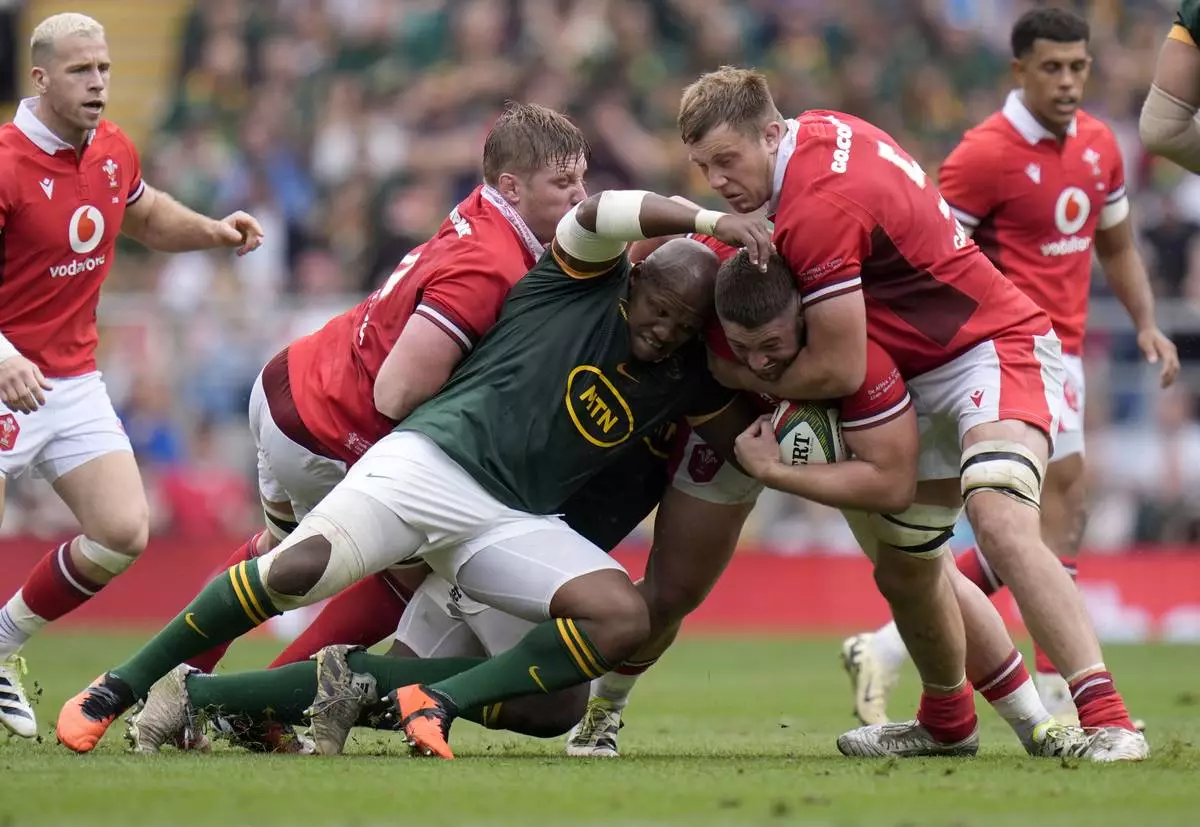
South Africa's Bongi Mbonambi, center left, tackles Wales' Gareth Thomas during the rugby union cup match between Wales and South Africa at Twickenham Stadium, London, Saturday June 22, 2024. (Andrew Matthews/PA via AP)
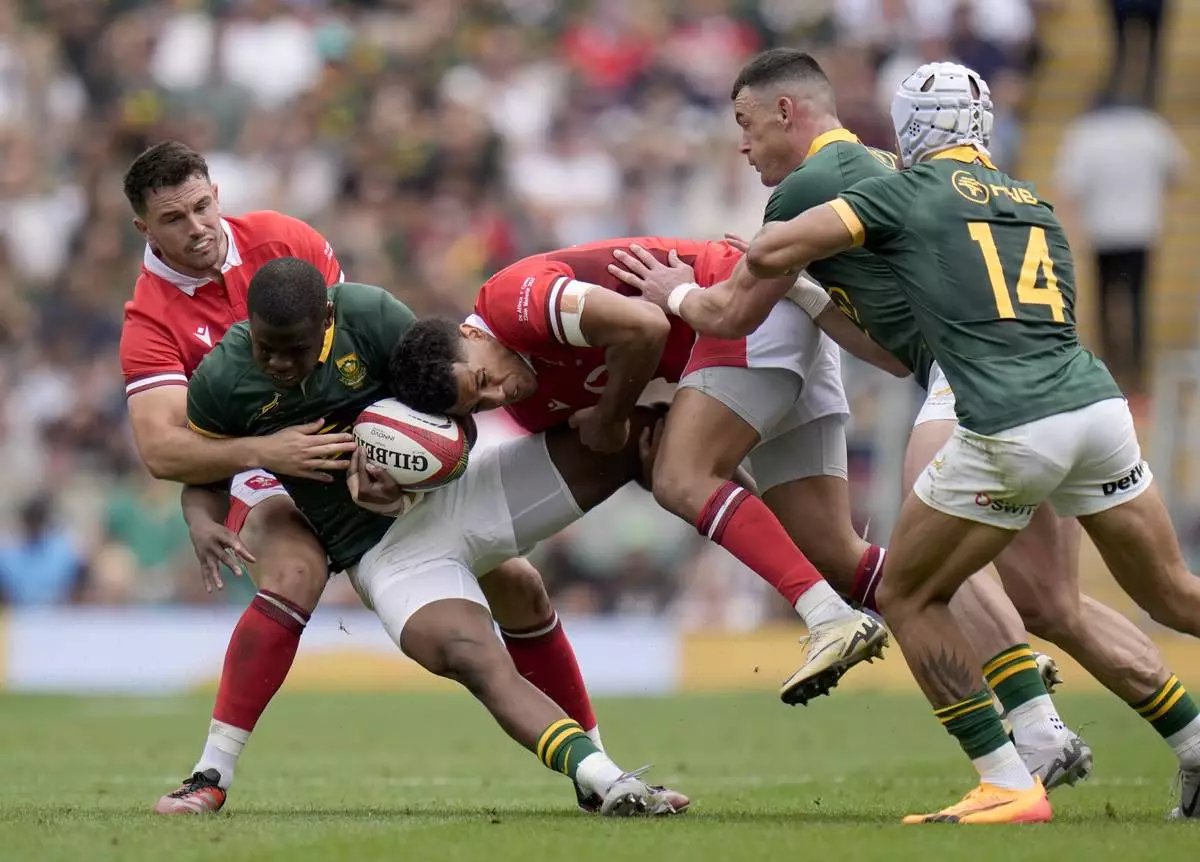
South Africa's Aphelele Fassi, center left, is tackled by Wales' Rio Dyer during the rugby union cup match between Wales and South Africa at Twickenham Stadium, London, Saturday June 22, 2024. (Andrew Matthews/PA via AP)
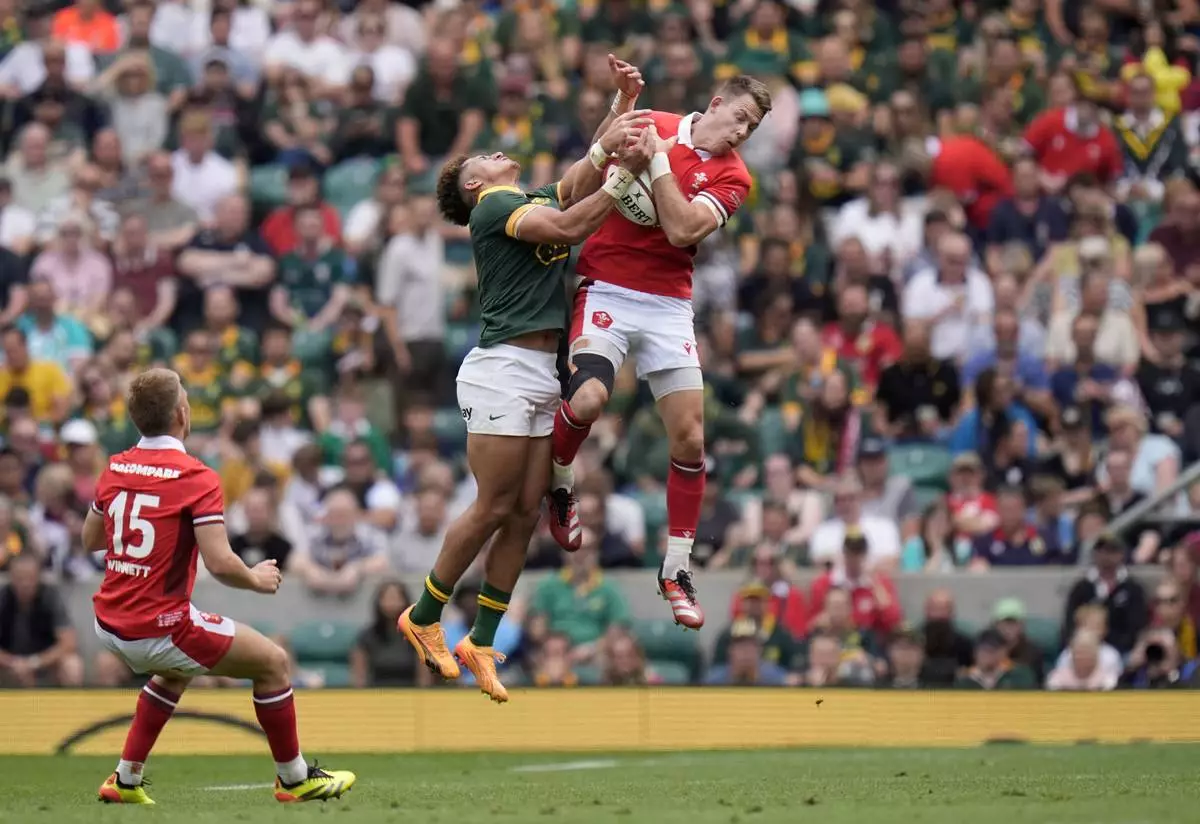
South Africa's Jordan Hendrikse, left, and Wales' Liam Williams battle for a high ball during the rugby union cup match between Wales and South Africa at Twickenham Stadium, London, Saturday June 22, 2024. (Andrew Matthews/PA via AP)
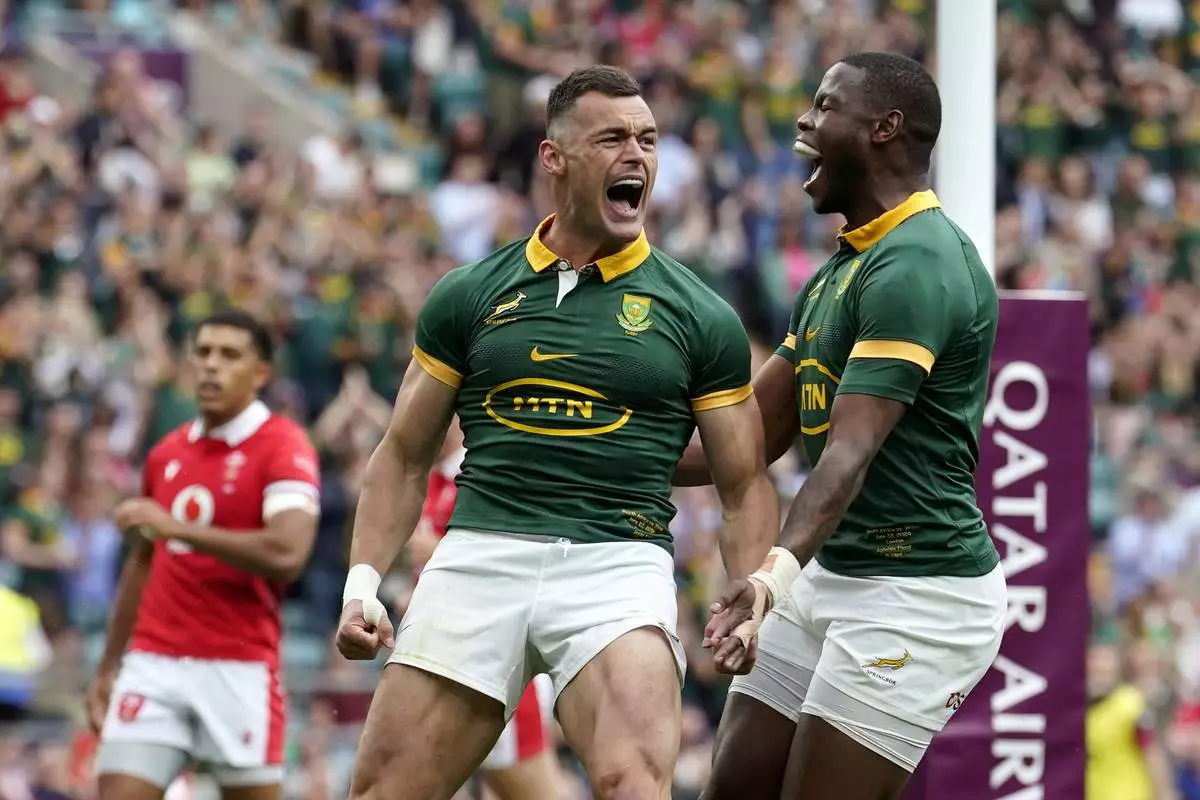
South Africa's Jesse Kriel, left, celebrates scoring during the rugby union cup match between Wales and South Africa at Twickenham Stadium, London, Saturday June 22, 2024. (Andrew Matthews/PA via AP)
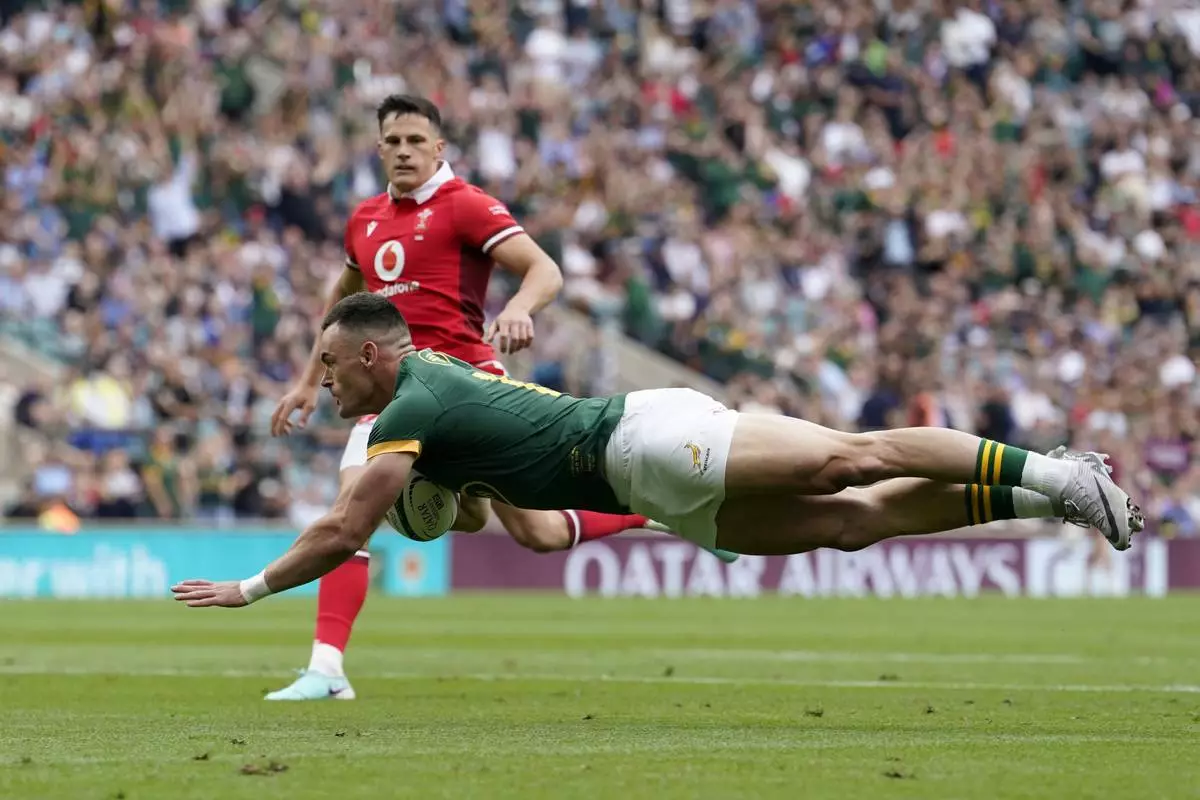
South Africa's Jesse Kriel scores a try during the rugby union cup match between Wales and South Africa at Twickenham Stadium, London, Saturday June 22, 2024. (Andrew Matthews/PA via AP)
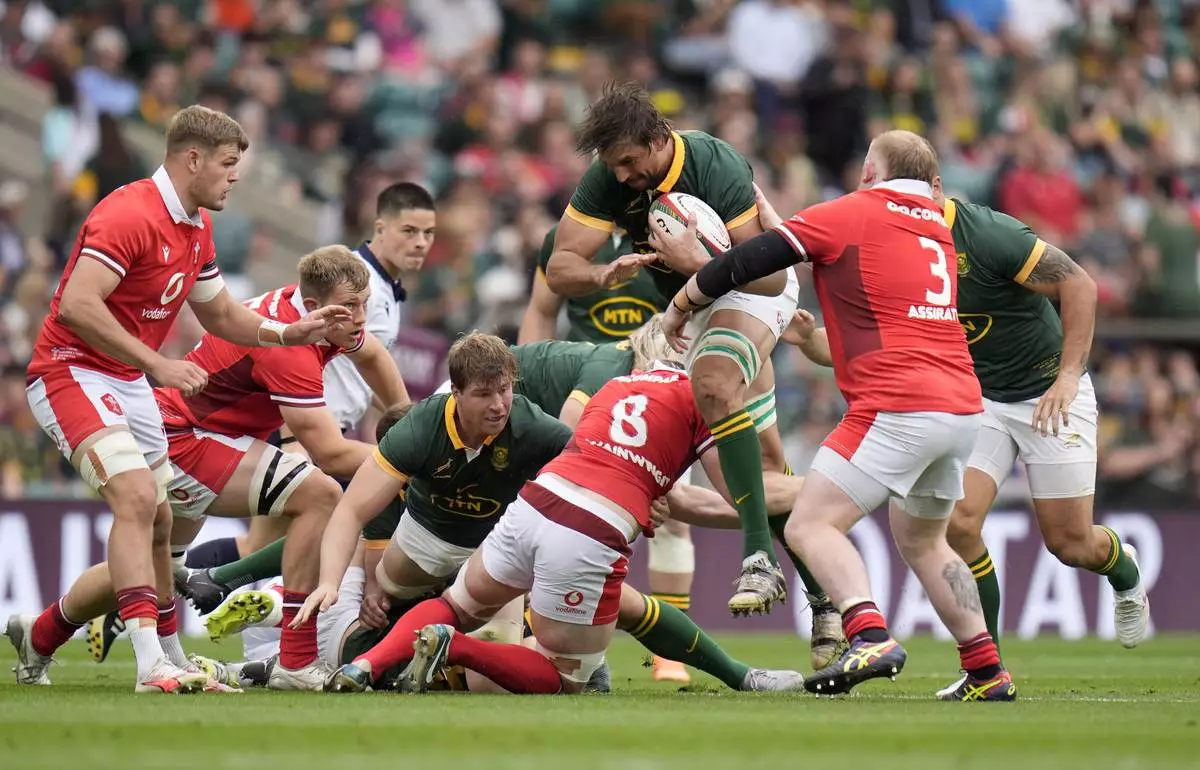
South Africa's Eben Etzebeth, centre, top, is tackled by Wales' Harri O'Connor, centre, bottom, and Owen Watkin, right, during the international rugby union match between South Africa and Wales, at Twickenham Stadium, London, Saturday June 22, 2024. (Andrew Matthews/PA via AP)
An outside review of the U.S. Tennis Association’s safeguarding system offered 19 specific recommendations for how the group that oversees the sport in the country and runs the U.S. Open Grand Slam tournament can do more to protect players from abuse such as sexual misconduct.
A 62-page report written by two lawyers — Mary Beth Hogan and David O’Neil of New York-headquartered firm Debevoise & Plimpton — was presented to the USTA Board of Directors last week and made public Thursday.
“The USTA complies with all of the requirements of the U.S. Center for SafeSport, and in several respects has policies and procedures that are more protective than the Center’s requirements. … We did, however, identify several ways to increase player safety that the USTA should consider adopting,” Hogan and O'Neil wrote.
The report arrives less than two months after a tennis player was awarded $9 million in damages by a jury in federal court in Florida following her accusation that the USTA failed to protect her from a coach she said sexually abused her at one of its training centers when she was a teenager. O’Neil — former head of the Justice Department’s criminal division — and Hogan wrote that their “review did not encompass the investigations of specific incidents involving allegations of sexual misconduct apart from reviewing whether the USTA met its obligations when abuse was reported to the USTA” and so they “did not investigate the events leading to” that Florida case.
They also noted that the USTA was a defendant in four other lawsuits — one of which resulted in a settlement — related to sexual abuse of tennis players over the last two decades.
The lawyers said they conducted “a thorough independent review” of the USTA’s “current policies and procedures for preventing, reporting, and responding to reports of abuse, including sexual misconduct.”
The review encompassed interviews with USTA employees and access to hundreds of the organization’s documents. It also included an assessment of safeguarding at 51 other national governing bodies for sports in the United States, Paralympic sports organizations and the U.S. Olympic and Paralympic Committee, along with the guidelines set forth by the U.S. Center for SafeSport.
The report says “the Board expressed its intention to incorporate” the suggestions into the USTA’s Safe Play Program.
“We view this report, including recommendations from the Debevoise team, as an important step forward in our efforts to further ensure a safe environment for all those involved in the sport of tennis," USTA CEO and executive director Lew Sherr said in a written statement. "We are working to implement the recommendations as thoroughly and swiftly as possible.”
The 19 recommendations include:
— seven that “focus on preventing misconduct before it occurs;"
— nine related to keeping “individuals who are known to have engaged in misconduct” away from USTA facilities and events, including by making information about them more broadly known, because, the report says, “one of the biggest concerns parents and players have relates to individuals who are known to have engaged in misconduct — either due to an adverse action by the Center or a criminal prosecution — but attempt to continue participating in tennis,” including by appearing “at USTA-sanctioned tournaments as spectators;”
— two “aimed at expanding the number of individuals who get Safe Play Approved … and individuals who take SafeSport training, particularly parents,” who “are often unaware of the ways in which coaches may manipulate both minor athletes and their parents, and it may be particularly difficult to identify problematic behavior when a parent is hopeful that a coach will help progress their child’s success in the sport;”
— and one that “calls for additional staffing and resources” for the USTA’s Safe Play Program to help adopt the recommendations.
The review says the USTA has only three employees "dedicated to developing and implementing the Safe Play Program and monitoring compliance,” and its three campuses for player development — in New York, Florida and California — “do not have staff members designated exclusively to overseeing athlete safety.”
This story clarifies that Debevoise & Plimpton is headquartered in New York.
Howard Fendrich has been the AP’s tennis writer since 2002. Find his stories here: https://apnews.com/author/howard-fendrich
AP tennis: https://apnews.com/hub/tennis
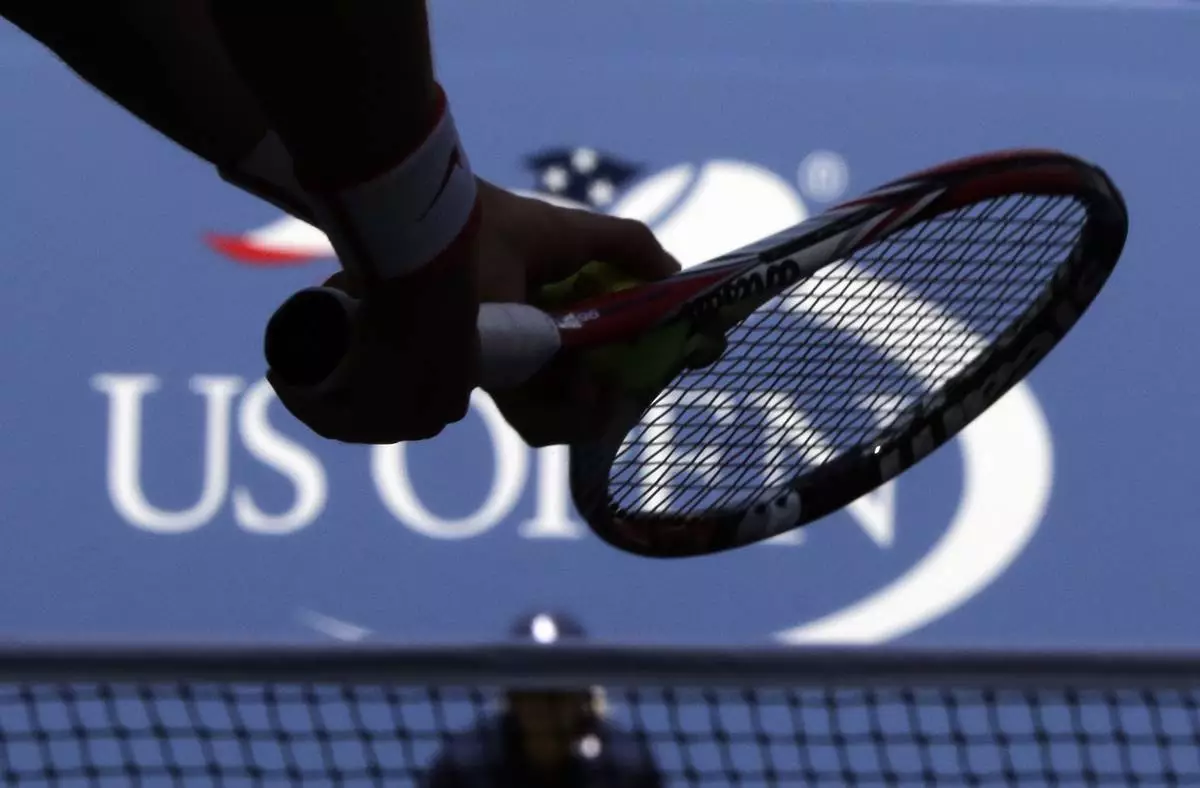
A player prepares to serve during the U.S. Open tennis tournament, Saturday, Sept. 5, 2015, in New York. An outside review of the U.S. Tennis Association’s safeguarding system makes 19 specific recommendations for how the group that oversees the sport in the country and runs the U.S. Open Grand Slam tournament can do more to protect players from abuse such as sexual misconduct. A 62-page report written by two lawyers was presented to the USTA Board of Directors last week and made public Thursday, June 27, 2024. (AP Photo/Charles Krupa, File)
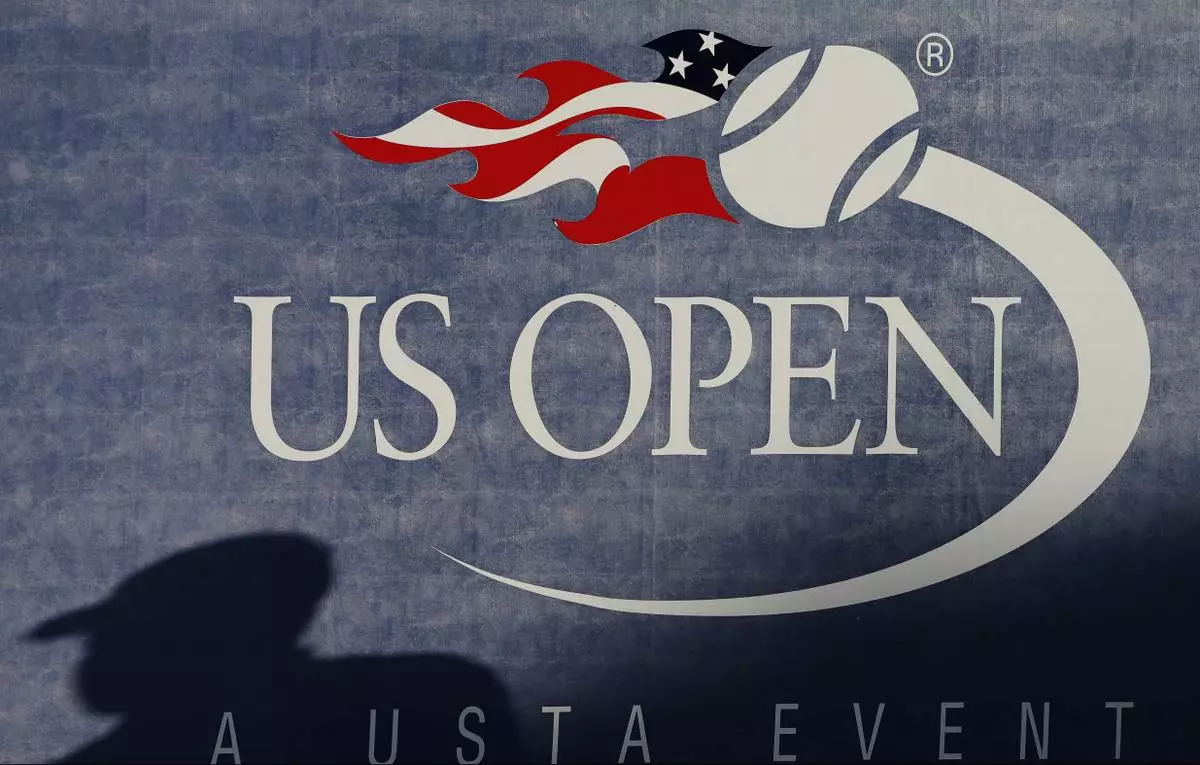
A shadow is cast on a court during the first round of play at the 2012 U.S. Open tennis tournament, Monday, Aug. 27, 2012, in New York. An outside review of the U.S. Tennis Association’s safeguarding system makes 19 specific recommendations for how the group that oversees the sport in the country and runs the U.S. Open Grand Slam tournament can do more to protect players from abuse such as sexual misconduct. A 62-page report written by two lawyers was presented to the USTA Board of Directors last week and made public Thursday, June 27, 2024. (AP Photo/Darron Cummings, File)








